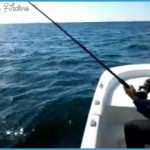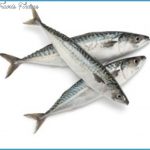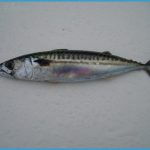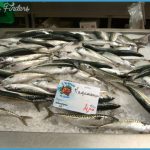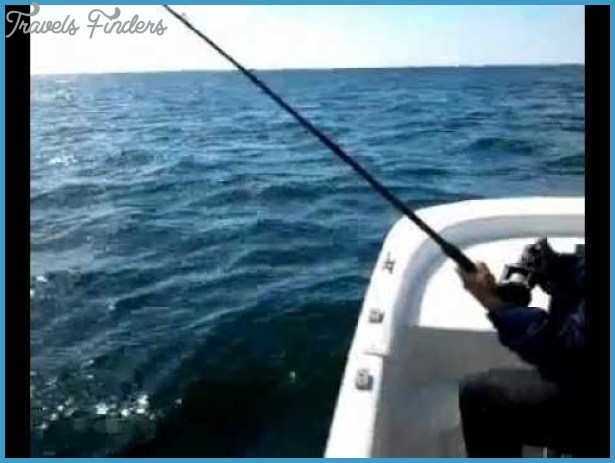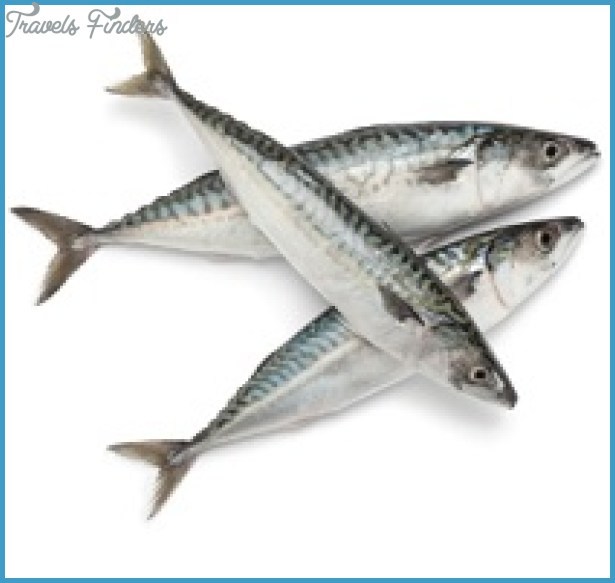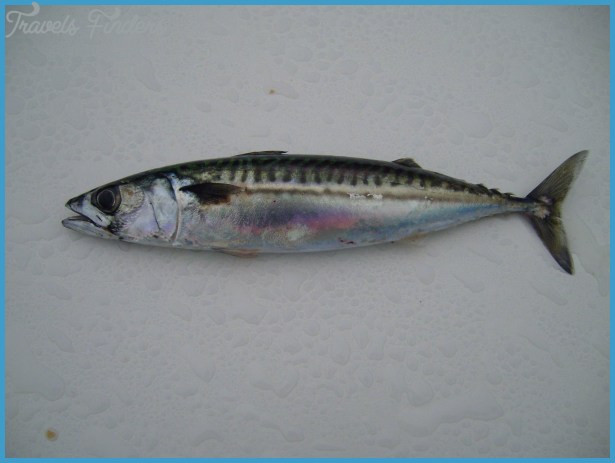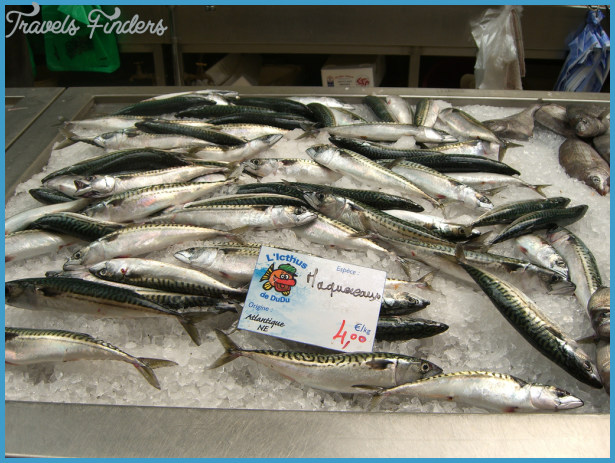Atlantic mackerel, Scomber scombrus, are an important food and sport fish in Maine. Mackerel are pelagic, or fish of the midwater. They spend the winter on the Middle Atlantic shelf and migrate north and inshore as spring progresses, reaching Maine coastal waters in early summer. Mackerel are underutilized as commercial fish, resulting in large numbers being available for recreational use.
Schools of mackerel consist of fish of a similar age-class. These range from diminutive “tinker mackerel” of 8 to 10 inches to so-called horse mackerel weighing more than 3 pounds.
In summer, schools of mackerel are found off the entire coast of Maine. These fish are sought by anglers trolling from boats and by those casting from shore. Mackerel are not selective and can be taken on any natural bait or artificial lure. Each year, anglers eagerly await the cry, “the mackerel are in.” With this news, hundreds of boats are launched and each breakwater, float, and pier is jammed with anglers anxious to get that first mess of tasty mackerel.
Techniques
Fly casting – Few anglers fly-cast for mackerel, but those that do have great sport. The best way to achieve success is to use a boat to locate schools. Action can be fast for a short while, until the school moves, in which case you must find it again or look for another school. Use any small bucktail. The best colors are white, red, and yellow. You can make your own mackerel flies without any special equipment; just tie some colored deer hair or calf tail hair to the shank of a size 6 hook. No body is needed. Trim the hair even with the bend of the hook. Any fly rod is suitable, but lighter outfits provide more sport. Remember to rinse your reel off after use, since saltwater is highly corrosive.
Spin fishing – Anglers fishing from shore rely on spinning tackle. Small spoons and jigs are cast as far out as possible and reeled in with constant twitches of the rod. Any rod and reel combination is acceptable, but as with fly casting, lighter outfits provide more fun. You will have the most fun with ultralight tackle. If you fish from a bridge or pier, you may want to use a medium-weight outfit, because you may have to reel your mackerel up for a considerable distance, depending on the stage of the tide.
If mackerel are present but are not hitting your lures, try reeling as fast as you can. Mackerel are a fast fish and are used to chasing forage species at high speeds.
Trolling – Most Maine mackerel are taken by trolling. This is a relaxed and enjoyable way to get a supply of mackerel. Rod holders are preferred, since mackerel have soft mouths and can easily hook themselves.
In earlier times, Maine anglers used a stout rod with a jig on the end and any number of simple bucktails above the jig. The idea was to hook one mackerel and wait until other fish, attracted to the struggle, became hooked. While this was an easy way to catch lots of fish at one time, more anglers are turning to light rods with a single lure or fly. This allows the scrappy mackerel to make the best possible show. A 20-inch mackerel on the end of a light rod can temporarily fool you into believing you are fast to a bluefish or striped bass.
Any rod is sufficient for trolling for mackerel, but fly rods provide the most sport with the least trouble. Spinning lines tend to twist, even with the use of a rudder. A fly rod, reel, and line, equipped with a 10-foot leader, is supremely efficient as a mackerel outfit. For flies, any streamer or bucktail will do, but small spoons or jigs are also effective.
Mackerel usually hold fairly close to the surface. As long as your lure or fly remains beneath the surface, you will catch mackerel. Be sure to watch for floating bits of aquatic weeds and other debris. Even a small bit of seaweed on your hook can cause your fly or lure to ride on the surface, rendering it ineffective.
Some savvy Maine anglers like to troll around working lobster boats. Any bait discarded by the lobsterman will attract mackerel.
You do not need to go far from shore to find schools of mackerel, although in places like Penobscot Bay, Blue Hill Bay, Englishman Bay, Machias Bay, and Cobscook Bay, schools of mackerel can be found cruising in the middle of the bay as well as near the shoreline.
Bait fishing – Anglers fishing in protected harbors, as well as those fishing from bridges and piers, often take good messes of mackerel on bait. Use light spinning gear, a small amount of weight, and a size 6 hook. Frozen shrimp, small strips of mackerel flesh with the skin on, mussels, marine worms, and even earthworms are all good bait. Let your bait sink to the bottom and keep a tight finger on your line, since mackerel are notorious bait stealers. Some anglers choose to employ a small bobber a few feet above the baited hook. This is most useful when fishing with frozen shrimp, since the shrimp is easily dislodged from the hook and the bobber will indicate the slightest nibble.
Care of mackerel – Of all Maine fish, mackerel are the most likely to spoil quickly unless properly taken care of as soon as they are caught. Some anglers keep mackerel in a bucket of salt water, changing the water frequently to keep the fish cool. This is a troublesome method and although it keeps the mackerel from spoiling, it makes them soft. A better method is to carry an ice chest full of ice. Unhook the mackerel and immediately place it on ice; it will remain firm and fresh for several days. You might want to use a separate cooler for your beverages and snacks.
Best bets for Maine mackerel: If you use a boat, you can catch mackerel anywhere along the coast during the months of July, August, and September, with bays and coves being the most productive places. The largest mackerel can be found in Downeast Maine, especially the waters off Eastport. If you are casting from shore, try Rockland Breakwater, Site 19; Belfast Footbridge, Site 28; and the State Pier at Fort Point, Site 32.

